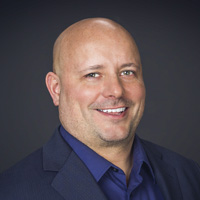8 Thrift Savings Plan Mistakes: What Not to Do With Your TSP
Many federal workers saving for retirement in TSPs get tripped up by these common pitfalls. To help maximize your own savings, make sure you steer clear of these eight mistakes.


For federal employees, participation in the TSP (Thrift Savings Plan) can greatly increase your chances of financial security in retirement, yet some of the folks you work with aren’t making the most of their TSP.
By participating in your TSP, you can save part of your income for retirement through automated payroll deductions. You can also receive matching contributions from your agency, perform some forward-looking tax planning for retirement by considering using the Roth option, and potentially grow your money for the future tax-free. But to help maximize your TSP, you should avoid these eight TSP pitfalls:

1. You are not contributing at least 5%
If you aren’t putting at least 5% of your income into your TSP, to maximize the matching contributions from your agency, you’re turning down free money.
You may already be at 5% and not know it. On Oct. 1, 2020, the automatic enrollment percentage for TSPs increased from 3% to 5% of basic pay. So, if you enrolled with the default option, on or after that date, you’re at 5%.
But, if you’re enrolled at a lower percentage (either by choice, or by default because you enrolled earlier), you might want to increase your contribution back to 5%. And you don’t have to stop at 5% either. Most financial advisers, including me, recommend saving far more than just 5% of your income (depending on your financial situation).

2. You are 100% invested in the G Fund
Lots of federal employees like the Government Securities Investment (G) Fund because it feels safe. The fund is invested in short-term U.S. Treasury securities that are specially issued to the TSP, so principal and interest payments are guaranteed by the federal government. When the stock market is volatile (and isn’t it always?), the G Fund appears to be a safe choice.
Unfortunately, if you put all your money into the G Fund, you’re exposing your retirement savings to a different challenge: inflation risk. Instead, splitting your money between two or more funds (there are five to choose from) could offer both increased diversification and a greater growth potential, which you’re very likely to need to combat the corrosive effects of inflation and help protect your purchasing power in retirement.

3. You assume a Lifecycle Fund is the right fit
Lifecycle funds take a retirement “target date” approach to investing. They’re based on the idea that younger federal employees can handle more risk than federal employees who are closer to retirement.
TSP Lifecycle funds are made up of a combination of all five TSP funds, and they automatically shift to a more conservative asset allocation as you approach your planned retirement date.
Many federal employees have chosen a Lifecycle fund because it sounded like “autopilot.” When you fly on an airplane, the middle of your flight is set to autopilot. But you still need a pilot for a safe landing. Autopilot without a pilot is dangerous, not safe.
Lifecycle funds make the assumption that all federal employees who plan to retire in the same year have the same risk tolerance. Of course that’s not the case.
If you’re using TSP Lifecycle funds, please “seek professional help,” and meet with a financial adviser to make sure you’re on course. Most financial advisers will offer you a complimentary appointment.

4. You’re choosing your TSP funds based upon past performance
You’ve probably heard it before, but it bears repeating: “Past performance is no guarantee of future results.” Research the funds available to you in your TSP and you’ll find past performance for each fund. But you’re investing for the future, not the past, and none of those funds can guarantee to repeat what they’ve done in the past. Instead: Focus on your risk tolerance, and your goals, to find the TSP funds that will best suit your needs for retirement.

5. You are taking loans from your TSP
Taking a loan from your TSP is a bad idea. The money you’re putting into your TSP is for retirement, not for buying a new car. If you leave federal employment with an outstanding TSP loan you have to pay back the full loan balance within 90 days. If you don’t, the IRS will consider the entire outstanding loan amount as a taxable distribution, taxing the sum as earned income. In addition, TSP borrowers who are younger than 59½ can also get hit with an additional 10% early-withdrawal penalty.

6. You fail to update your beneficiaries
If you pass away without a Designation of Beneficiary form (TSP-3) on-file, your TSP will be distributed in the “statutory order of precedence,” which starts with your spouse and goes through a variety of other “potential beneficiaries.” If that’s OK with you, you don’t have to bother with this form. But if you’ve already filed a beneficiary form, and something has changed (maybe a divorce, a new marriage or maybe new grandkids), or the statutory order of precedence just doesn’t give you a warm fuzzy, file an updated Designation of Beneficiary form.

7. You don’t understand all of your withdrawal options
When you leave federal employment, you have a few choices for how to take the money from your retirement account. You can:
- Withdraw all of the money as a taxable lump sum.
- Withdraw the money in equal monthly payments based on the dollar amount or actuarial tables.
- Have the TSP purchase a life annuity for you.
- Work with a financial adviser to perform a rollover to a Traditional IRA and/or Roth IRA, and for advanced income planning, asset allocation, investment management, forward-looking tax planning, health care planning and legacy planning.
The first option listed above — withdrawing all your money as a lump sum — exposes 100% of your Traditional TSP balance to federal income taxes (and possibly state income taxes) in one tax year.
The second option is likely too simplistic for most separated federal employees, and likely won’t work as well as other retirement income options. Consider meeting with an independent retirement financial planner so that you can at least consider other income options that may work better for you. It’s always best to have choices.
The third option gives the TSP the job of purchasing a life annuity for you. This is kind of like when I was in Navy boot camp and they told me the exact underwear I was going to wear for the next two months. No choices. No argument. Do as you’re told. Yes, sir.
If you’re going to consider a life annuity for retirement income, I recommend you meet with an independent retirement financial planner and have them see if the TSP’s life annuity is your best option. It may not be.
The fourth option may be a good choice for you if you’d like broader — and possibly better — options than just the five funds that are available to you in your TSP, and if advanced income planning, asset allocation, investment management, forward-looking tax planning, health care planning and legacy planning are important to you.

8. You don’t have a clear strategy for your TSP
Often, when federal employees enroll in the TSP, it’s done without thinking about how the TSP will complement (or complicate) other retirement accounts and retirement income sources, such as Social Security benefits, pensions, IRAs, 401(k)s, 403(b)s, Deferred Comp, non-qualified accounts, bank accounts, etc.
Enrolling in the TSP is great, but don’t just enroll in it and settle for the “default settings.” Meet with a retirement financial planner and qualified tax professional to see what forward-looking tax planning and advanced retirement income planning options might be in your best interests.
Rather than just enrolling in the TSP and turning off your brain, find qualified professionals — even if it's just for one meeting, because you don’t know what you don’t know.
They can help you evaluate your TSP choices within the context of a holistic, tailored retirement plan. How much will you need to have saved for a comfortable retirement? Will your TSP fund choices, and your contribution percentage, get you to that goal?
Look for independent financial professionals who are knowledgeable in TSPs, and work together to build a retirement financial plan that’s based upon your specific needs, wants, and goals.
--
Kim Franke-Folstad contributed to this article.
Scott Tucker Solutions Inc. is an independent financial services firm that utilizes a variety of investment and insurance products. Investment advisory services offered only by duly registered individuals through AE Wealth Management, LLC (AEWM). AEWM and Scott Tucker Solutions Inc. are not affiliated companies. All investments are subject to risk, including the potential loss of principal. No investment strategy can guarantee a profit or protect against loss in periods of declining values. Any references to guarantees or lifetime income generally refer to fixed insurance products, never securities or investment products. Insurance and annuity product guarantees are backed by the financial strength and claims-paying ability of the issuing insurance company. Scott Tucker Solutions Inc. has a strategic partnership with tax professionals and attorneys who can provide tax and/or legal advice. Neither the firm nor its agents or representatives may give tax or legal advice. Individuals should consult with a qualified professional for guidance before making any purchasing decisions. Scott Tucker Solutions Inc is not affiliated with the U.S. government or any governmental agency. 839727 – 3/21
Appearances on Kiplinger.com were obtained through a paid PR program. The columnist received assistance from a public relations firm in preparing this piece for submission to Kiplinger.com. Kiplinger was not compensated in any way.
This article was written by and presents the views of our contributing adviser, not the Kiplinger editorial staff. You can check adviser records with the SEC or with FINRA.
Profit and prosper with the best of Kiplinger's advice on investing, taxes, retirement, personal finance and much more. Delivered daily. Enter your email in the box and click Sign Me Up.

Scott Tucker is president and founder of Scott Tucker Solutions, Inc. He has been helping Chicago-area families with their finances since 2010. A U.S. Navy veteran, Scott served five years on active duty as a cryptologist and was selected for duty at the White House based on his service record. He holds life, health, property and casualty insurance licenses in Illinois, has passed the Series 65 securities exam in 2015 and is an Investment Adviser Representative.
-
 What to expect from the global economy in 2026
What to expect from the global economy in 2026The Kiplinger Letter Economic growth across the globe will be highly uneven, with some major economies accelerating while others hit the brakes.
-
 What You Need to Do With Your 401(k) Before 2025 Is Over
What You Need to Do With Your 401(k) Before 2025 Is OverBefore 2025 ends, check your 401(k) contributions, investments, and catch-up eligibility to lock in this year’s tax savings and employer match.
-
 3 Year-End Tax Moves You Can't Afford to Miss
3 Year-End Tax Moves You Can't Afford to MissDon't miss out on this prime time to maximize contributions to your retirement accounts, do Roth conversions and capture investment gains.
-
 I'm a Tax Attorney: These Are the Year-End Tax Moves You Can't Afford to Miss
I'm a Tax Attorney: These Are the Year-End Tax Moves You Can't Afford to MissDon't miss out on this prime time to maximize contributions to your retirement accounts, do Roth conversions and capture investment gains.
-
 I'm an Investment Adviser: This Is the Tax Diversification Strategy You Need for Your Retirement Income
I'm an Investment Adviser: This Is the Tax Diversification Strategy You Need for Your Retirement IncomeSpreading savings across three "tax buckets" — pretax, Roth and taxable — can help give retirees the flexibility to control when and how much taxes they pay.
-
 Could an Annuity Be Your Retirement Safety Net? 4 Key Considerations
Could an Annuity Be Your Retirement Safety Net? 4 Key ConsiderationsMore people are considering annuities to achieve tax-deferred growth and guaranteed income, but deciding if they are right for you depends on these key factors.
-
 I'm a Financial Pro: Older Taxpayers Really Won't Want to Miss Out on This Hefty (Temporary) Tax Break
I'm a Financial Pro: Older Taxpayers Really Won't Want to Miss Out on This Hefty (Temporary) Tax BreakIf you're age 65 or older, you can claim a "bonus" tax deduction of up to $6,000 through 2028 that can be stacked on top of other deductions.
-
 Meet the World's Unluckiest — Not to Mention Entitled — Porch Pirate
Meet the World's Unluckiest — Not to Mention Entitled — Porch PirateThis teen swiped a booby-trapped package that showered him with glitter, and then he hurt his wrist while fleeing. This is why no lawyer will represent him.
-
 Smart Business: How Community Engagement Can Help Fuel Growth
Smart Business: How Community Engagement Can Help Fuel GrowthAs a financial professional, you can strengthen your brand while making a difference in your community. See how these pros turned community spirit into growth.
-
 In 2026, the Human Touch Will Be the Differentiator for Financial Advisers
In 2026, the Human Touch Will Be the Differentiator for Financial AdvisersAdvisers who leverage innovative technology to streamline tasks and combat a talent shortage can then prioritize the irreplaceable human touch and empathy.
-
 How Financial Advisers Can Deliver a True Family Office Experience
How Financial Advisers Can Deliver a True Family Office ExperienceThe family office model is no longer just for the ultra-wealthy. Advisory firms will need to ensure they have the talent and the tech to serve their clients.
